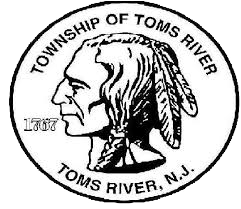Frequently Asked Questions
In June of 2016, Toms River completed their Downtown Circulation Neighborhood Plan (Neighborhood Plan). The purpose of the Neighborhood Plan was to evaluate traffic and circulation issues affecting Downtown Toms River. From the analysis that was completed the plan identified a number of existing issues and identified potential improvements to mitigate the existing issues while also providing for redevelopment of the waterfront area.
In addition to Toms River’s work, Ocean County has completed several studies and projects in the area including operation analysis and re-timing of intersection along Water Street (2018) and a Road Safety Audit (2019) of Water Street between the Garden State Parkway and Washington Street.
The purpose of this project is to build off of the work that was completed by Toms River and Ocean County in order to develop conceptual infrastructure improvements that address existing safety and operational issues while providing capacity for planned re-development of the waterfront area in Toms River.
The LCD study is the first phase for federally funded transportation improvement projects. The LCD study phase includes data collection; coordination with local municipal officials, project stakeholders, and federal and state permitting agencies; public outreach; the development of a reasonable number of sensible and practical conceptual alternatives; and the recommendation of a Preliminary Preferred Alternative (PPA).
The conceptual alternatives include:
A “no-build” alternative and infrastructure improvements alternatives
- Conduct Data Collection: Spring/Summer 2020 (Traffic Data Collection completed in 2019)
- Community Outreach/Input: Summer 2020
- Purpose & Need Statement Complete: Summer 2020
- Community Outreach/Input: Late Fall 2020
- Alternatives Analysis Complete: Late Fall 2020
- Selection of Preliminary Preferred Alternative: Late Fall/Winter 2020/2021
- Final Concept Development Report: Spring 2021
As part of the study, the project team is asking for input from the local officials and community stakeholders to understand how best to safely accommodate pedestrian and bicycle mobility and access. As part of the LCD study phase, when developing the project purpose and need for improvements, all modes of transportation will be taken into consideration.
The reason for this study is to identify the current transportation issues and needs in the Toms River Downtown Waterfront Area. The project is currently in the LCD phase to identify the needs, develop alternatives, and determine a Preliminary Preferred Alternative (PPA) for transportation network improvements. Ocean County, in partnership with Toms River, with support from state and regional agencies will continue to seek community input on the design and proposed transportation improvements during the current LCD phase and future phases of the project.
There is no estimated cost for design and construction of the project at this time since the Preliminary Preferred Alternative (PPA) has not yet been determined. The LCD study will determine this PPA and is funded by Ocean County. The USDOT BUILD grant will subsequently be used to advance the project from the LCD study phase to final Construction.
The LCD Study phase, guided by public input, will determine the project’s Preliminary Preferred Alternative (PPA). Once determined, the next phase of the project will be able to illustrate all impacts and will partner with local stakeholders to mitigate any and all negative impacts to the maximum extent possible.
Federally funded projects require environmental screening that follows the National Environmental Policy Act process (NEPA) to establish existing socioeconomic and environmental conditions and weigh the potential impacts that may be caused by the range of alternatives under consideration. Federal and state regulations require a careful assessment of potential environmental impacts and identification of mitigation or avoidance strategies that may be considered. Environmental resources include air, noise, hazardous or contaminated sites, parks, wetlands, water resources, ecological resources, threatened and endangered species, social and economic impacts and cultural resources such as historic structures and facilities
Your input is important to every phase of the study. The study team will collect information such as how the local community uses (existing and expected) the project area, any current traffic problems and how the public sees alternative solutions. Community outreach during the planning stages is a vital part of the LCD process and we encourage the community to follow, participate and help make sure every potential effective element has been considered and examined for its viability.
Public meetings are a good way to make your voice heard. At public meetings, the study team will be present to answer your questions. If you are unable to attend a meeting, you can stay up to date on project developments by visiting this website and reviewing the meeting minutes and PowerPoint presentation.
Note: Due to COVID-19 public meetings will likely be held virtually. Public notice of the virtual public meeting information will be provided when a date and time is set.
The study team is committed to keeping the public informed throughout the LCD study. Our aim is to keep you up-to-date on the project and respond to your questions and concerns. We encourage the public to stay up-to-date on project developments by visiting this website, signing up for project updates, reviewing the meeting minutes and meeting presentations.
We also encourage community members to voice their concerns and contribute suggestions. For questions or comments, contact the project team at [email protected].




